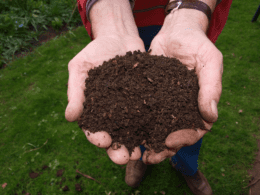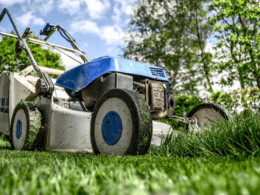Are you struggling to keep your seedlings healthy and thriving? Proper watering is crucial for their growth, but it can be a challenging task to master. Overwatering or underwatering can lead to pests, mold, disease, or even death of the plant.
Don’t worry, though – with a few tips and tricks, you can learn how to water your seedlings properly and ensure their success.
In this article, we will guide you through the best watering techniques for seedlings, whether you’re growing them indoors or outdoors. We’ll also introduce you to some useful tools and devices for monitoring the moisture levels in your soil.
Whether you’re a beginner or an experienced gardener, our tips and tricks will help you achieve healthy and robust seedlings, giving you the confidence to grow a thriving garden. So, let’s dive in and learn how to water your seedlings like a pro!
Quick Takeaways
- Checking soil moisture regularly is important for proper hydration of seedlings.
- Bottom watering is a gentle and effective method, while top watering can be used for larger seedlings or to keep soil moist before germination.
- Overwatering can lead to pests, mold, and disease, so seedlings should be watered enough to keep soil moist, but not too much that it becomes soggy.
- The frequency and method of watering may vary depending on the type of plant, but knowing how to water seedlings properly can lead to successful and healthy plant growth.
Watering Techniques
You should use bottom watering for your seedlings as it’s a gentle and effective method that minimizes the risk of damaging the delicate stems and leaves.
To bottom water, simply fill a tray or container with water and place your seedling tray on top. The soil will absorb the water from the bottom up, ensuring even hydration throughout the tray.
Bottom watering is especially useful for seedlings that are prone to damping off, a fungal disease that can be caused by moist soil and poor air circulation.
While top watering can be used for larger seedlings or to keep soil moist before germination, it’s important to be mindful of the watering frequency and water pressure.
Too much water can lead to waterlogged soil, which can cause root rot and other problems. Self-watering systems can also be used to maintain consistent soil moisture, but it’s important to regularly check the water level and adjust as needed.
Remember to always check the soil moisture before watering and adjust your watering frequency and method based on the specific needs of your plants.
Indoor vs Outdoor Seedlings
When growing seedlings, it’s important to consider whether they will be grown indoors or outdoors.
Indoor seedlings require more frequent watering than outdoor seedlings due to the controlled environment and lack of natural rainfall. It’s recommended to check the soil moisture regularly and water when the top inch of soil feels dry to the touch. Bottom watering is a gentle and effective method for indoor seedlings as it allows the soil to absorb water from the bottom up. Self-watering seed trays and humidity domes can also help preserve moisture during germination.
Outdoor seedlings, on the other hand, generally require less frequent watering as they receive natural rainfall. One inch of rain is usually enough for outdoor seedlings, but supplement with watering if necessary. It’s important to keep in mind that watering frequency and method may vary depending on the type of plant.
Checking soil moisture is the best indicator for when to water seedlings. Proper watering practices can lead to successful and healthy plant growth.
Tools and Devices for Monitoring Moisture
To monitor the moisture levels of your seedlings, it’s highly recommended to use tools such as soil moisture gauges or self-watering systems. Soil moisture gauges can provide accurate measurements of hydration levels, allowing you to determine if your seedlings need watering or not.
On the other hand, self-watering systems require regular checks for water level, but they can help preserve moisture during germination and reduce the risk of overwatering. Using these tools can give you peace of mind, knowing that your seedlings are getting the right amount of water they need to grow healthy and strong.
With soil moisture gauges and self-watering systems, you can easily monitor and adjust the moisture levels of your seedlings, ensuring that they are not too dry or too wet. By incorporating these devices into your gardening routine, you can increase your chances of successful and healthy plant growth.
Frequently Asked Questions
How do I know when my seedlings need water?
To check if your seedlings need water, stick your finger in the soil up to your first knuckle. If it feels dry, it’s time to water. Proper drainage is crucial for healthy seedlings.
Can tap water be used to water seedlings, or is filtered water necessary?
Tap water can be used for seedlings, but filtered water can provide benefits. Tap water impurities can impact seedling growth, causing mineral buildup and pH imbalances. Filtered water can improve overall plant health and reduce the risk of issues.
Should I water my seedlings more or less frequently during different stages of growth?
To balance seedling growth, adjust watering frequency based on soil moisture. Avoid common mistakes by not over or under watering. Keep it simple and engaging for a safe, successful plant growth.
Can seedlings be watered too early in the morning or too late at night?
Best watering practices for seedlings include avoiding early morning or late night watering. This can cause excess moisture, increasing the risk of mold and disease. Stick to watering during the day when the soil is dry to the touch.
Can I use rainwater to water my indoor seedlings?
Yes, you can use rainwater to water your indoor seedlings. Rainwater has benefits like being free of chemicals and minerals found in tap water. Use indoor watering techniques like bottom watering to avoid overwatering.









